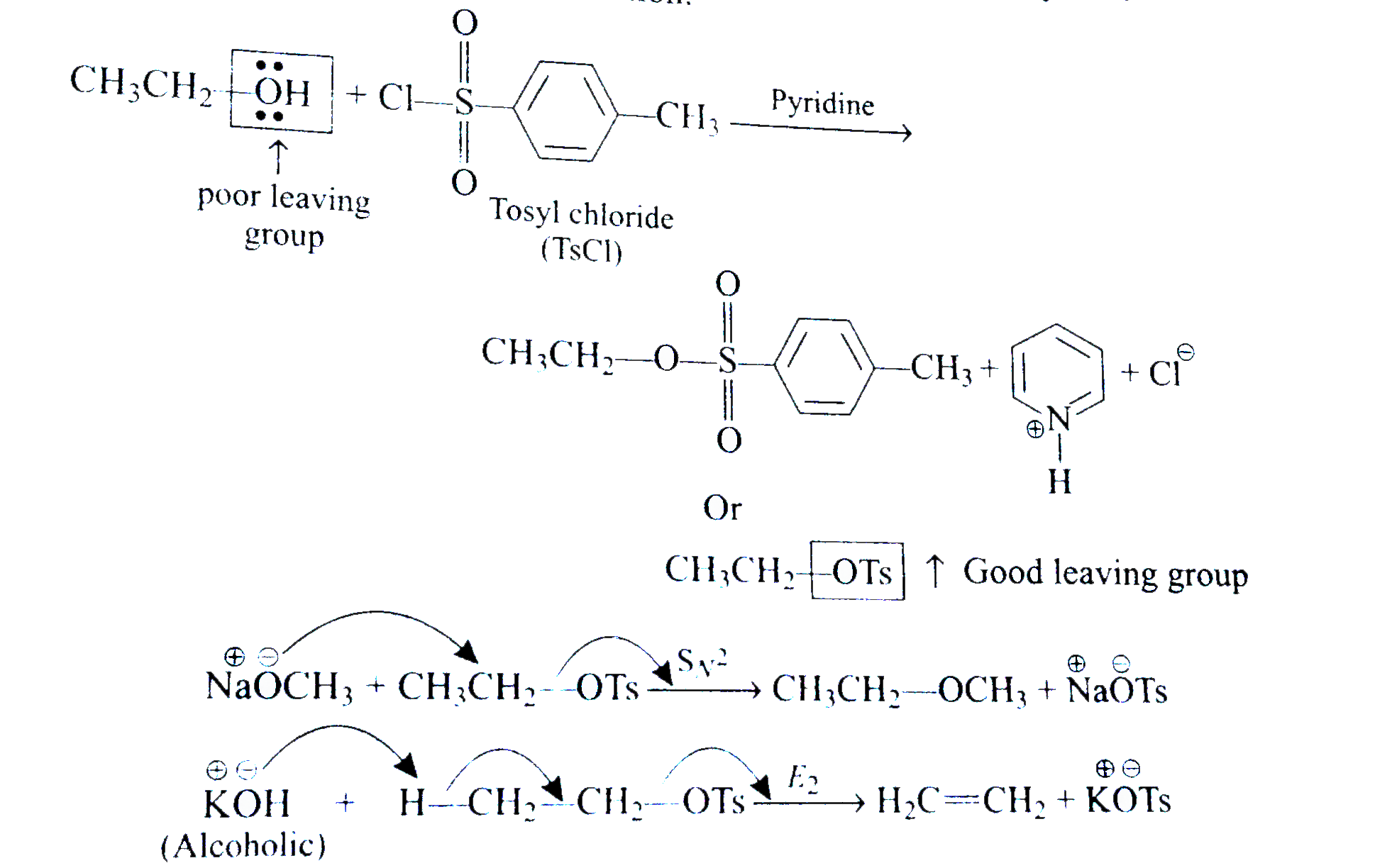3−Phenol propanic acid (B) can be prepared by both nitrile and carbonation method as shown.

Path I gives a good yield of (B).
ӨCN initiates elimination reaction.
If both (A) are (R) are true and (R) is the correct explanation of (A).
If both (A) and (R) are true but (R) is not the correct explanation of (A).
If (A) is true but (R) is false.
If (A) is false but (R) is true.
The correct Answer is:A
Since 3−phenol propanoic acid is 1∘RX, preparation by both methods can occur.
Topper's Solved these Questions
- CARBOXYLIC ACIDS AND THEIR DERIVATIVESBook:CENGAGE CHEMISTRYChapter:CARBOXYLIC ACIDS AND THEIR DERIVATIVESExercise:Exercises Archives (Single Correct)
Explore 10 Videos
- CARBOXYLIC ACIDS AND THEIR DERIVATIVESBook:CENGAGE CHEMISTRYChapter:CARBOXYLIC ACIDS AND THEIR DERIVATIVESExercise:Exercises Archives (Assertion-Reasoning)
Explore 2 Videos
- CARBOXYLIC ACIDS AND THEIR DERIVATIVESBook:CENGAGE CHEMISTRYChapter:CARBOXYLIC ACIDS AND THEIR DERIVATIVESExercise:Exercises (Singlecorrect)
Explore 64 Videos
- BIOMOLECULES, POLYMERS AND CHEMISTRY IN EVERYDAY LIFEBook:CENGAGE CHEMISTRYChapter:BIOMOLECULES, POLYMERS AND CHEMISTRY IN EVERYDAY LIFEExercise:QUESTION BANK
Explore 8 Videos
- CHEMICAL KINETICSBook:CENGAGE CHEMISTRYChapter:CHEMICAL KINETICSExercise:Archives Subjective
Explore 23 Videos
Similar Questions
(a) Give the compounds from which isobutanoic acid (A)(Me2CHCOOH) can be prepared in a better way also describe the method.
(b) Convert 1-chlorobutane (A) to valeric acid (B).
( c) Convert benzene to adipic acid.
(d) Complete the following reactions.
(i)
(ii) .
.
View Solutionv_display_options
View Solution
Knowledge Check
Succinic acid (B) can be prepared by both nitrile and carbonation method as shown.

Both paths give good yields of (B).
(A) with Mg would lead to the loss of vicinal Br atoms to give alkene and MgBr2.AIf both (A) are (R) are true and (R) is the correct explanation of (A).BIf both (A) and (R) are true but (R) is not the correct explanation of (A).CIf (A) is true but (R) is false.DIf (A) is false but (R) is true.Read the passage given below and answer the following questions:
Aldehydes, ketones and carboxylic acids are few of the major classes of organic compounds containing carbonyl group. Aldehydes are prepared by dehydrogenation or controlled oxidation of primary alcohols and controlled or selective reduction of acyl halides. Ketones are prepared by oxidation of secondary alcohols and hydration of alkynes. Carboxylic acids are prepared by the oxidation of primary alcohols, aldehydes and alkenes by hydrolysis of nitriles and by treatment of Grignard reagents with carbon dioxide.
Name the main compounds A and B formed in the following reaction:
CH3CN(i)CH3MgBr−−−−−−−−→(ii)H2O+AZn(Hg)/conc.HCl−−−−−−−−−−−−→BACH3CH2COOH[A],CH3CH2CH3[B]BCH3CH2CHO[A],C2H4[B]CCH3COCH3[A],CH3CH2CH3[B]DCH3COCH3[A],C2H6[B]Read the passage given below and answer the following questions:
Aldehydes, ketones and carboxylic acids are few of the major classes of organic compounds containing carbonyl group. Aldehydes are prepared by dehydrogenation or controlled oxidation of primary alcohols and controlled or selective reduction of acyl halides. Ketones are prepared by oxidation of secondary alcohols and hydration of alkynes. Carboxylic acids are prepared by the oxidation of primary alcohols, aldehydes and alkenes by hydrolysis of nitriles and by treatment of Grignard reagents with carbon dioxide.
Name a method by which both aldehydes and ketones can be prepared.AReduction of carboxylic acidsBOzonolysis of alkenesCOxidation of alcoholsDAll of the above
An alkane A on ozobolysis yields acetone and an aldeyde. The aldehyde is easily oxidised to an acid B. When B is treated with bromine in presence of yields a compound C which on hydrolysis gives a hydroxyle acid D. This acid can also be obatined from acetone by the reaction with hydrogen cyanide followed by hydrolysis. Identify the compounds A, B C and D.
View SolutionExplain the effect of SN2 rates for the following reactions :
(a) Increasing the polarity of solvent.
(b) Show the T.S with all partial charges for each reaction type.
(I) Me2⊕S−Me+NH3→Me⊕NH3+Me2S
(II) MeI+NH3→Me⊕NH3+IӨ
(III) MeI+ӨOH→MeOH+IӨ
(IV) Me2S⊕−Me+ӨOH→MeOH+Me2S.
View SolutionAlcohols are converted to tosylates by treatment with p-toluence sulfonyl chloride (TsCl) in the presence of pyridine. This overall process converts a poor leaving group (ӨH) into good one (ӨTs). A tosylate is a good leaving group its conjugates acid p-touence sulfonic acid is strong acid. Beacuse alkyl tosylates have food leaving groups, they undergo both nucleophilic substitution and β−elimination.

What would be the major product of the following reactions?

View SolutionAlcohols are converted to tosylates by treatment with p-toluence sulfonyl chloride (TsCl) in the presence of pyridine. This overall process converts a poor leaving group (ӨH) into good one (ӨTs). A tosylate is a good leaving group its conjugates acid p-touence sulfonic acid is strong acid. Beacuse alkyl tosylates have food leaving groups, they undergo both nucleophilic substitution and β−elimination.

Find the major product of the following reaction:

View SolutionAlcohols are converted to tosylates by treatment with p-toluence sulfonyl chloride (TsCl) in the presence of pyridine. This overall process converts a poor leaving group (ӨH) into good one (ӨTs). A tosylate is a good leaving group its conjugates acid p-touence sulfonic acid is strong acid. Beacuse alkyl tosylates have food leaving groups, they undergo both nucleophilic substitution and β−elimination.

Idetify the final product of the following sequences of reactions:

View Solution

